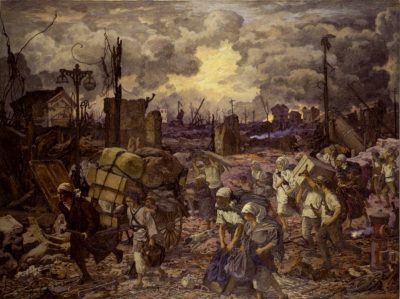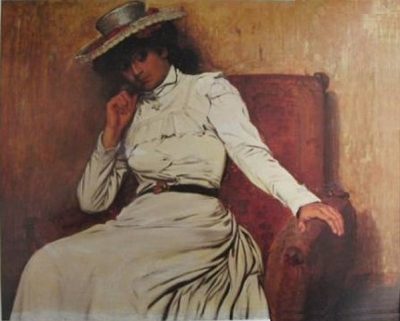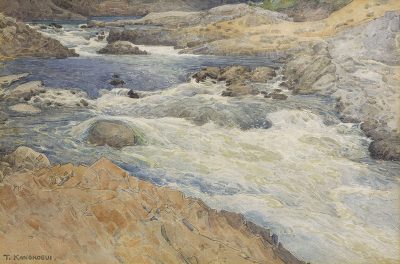Japan art and Takeshiro Kanokogi: A world turned upside down
Lee Jay Walker
Modern Tokyo Times

The Japanese artist Takeshiro Kanokogi (1874-1941) was transfixed by art emanating from France for much of his life. Hence, he traveled often between both nations after becoming established in Japan.
Kanokogi was born during the early period of the Meiji Restoration that occurred in 1868. This period ushered in the modernization of the nation. However, it also leads to Japan becoming expansionist – militarily wise – concerning the encroachment of Western Powers.

Historically, from the Meiji period onward, Japan – just like today – treats regional nations in Northeast Asia with lesser importance (China, North Korea, South Korea, and the Russian Federation). Hence, Japan is firmly in the camp of America and leading Western powers (Australia, France, Germany, the United Kingdom, and welcomes the influence of NATO and the EU) in modern times. This is a far cry from the history of Japan when China and Korea culturally played a very important role – notably China in the field of art, culture, philosophy, religion (negating Shintoism), and so forth.
Concerning the artistic influence of Kanokogi, the Hiroshima Museum of Art says he was “A Western-style painter, active chiefly in the Salon of Japan with the firm manner learned from French Academism.”

In the first art piece in this article, you can see an individual gazing out at the world. Hence one can only imagine the initial Paris witnessed by Kanokogi prior to the convulsions of World War One. Therefore, he must have felt sadness near the end of his life knowing that Japan and France viewed each other with a sense of hostility – concerning the political elites of both nations.
Unlike the early Meiji Period that viewed Western power and dominance with awe – even if tinged with a sense of foreboding – the common anti-Western thread emerged in the early period of the twentieth century. Irrespective of the anti-Western thread in Japan being communist, socialist, nationalist, or militarist in the 1930s.

Thus the commonality of art and learning was now engulfed in geopolitical and ideological mayhem. Therefore, the final years for Kanokogi must have entailed sadness.
https://www.hiroshima-museum.jp/en/collection/jp/kanokogi_t.html

PLEASE DONATE TO HELP MODERN TOKYO TIMES
Modern Tokyo News is part of the Modern Tokyo Times group
DONATIONS to SUPPORT MODERN TOKYO TIMES – please pay PayPal and DONATE to sawakoart@gmail.com
http://moderntokyotimes.com Modern Tokyo Times – International News and Japan News
https://www.pinterest.co.uk/moderntokyotimes/ Modern Tokyo Times is now on PINTEREST
http://sawakoart.com – Sawako Utsumi personal website and Modern Tokyo Times artist
https://moderntokyonews.com Modern Tokyo News – Tokyo News and International News
PLEASE JOIN ON TWITTER
https://twitter.com/MTT_News Modern Tokyo Times
PLEASE JOIN ON FACEBOOK